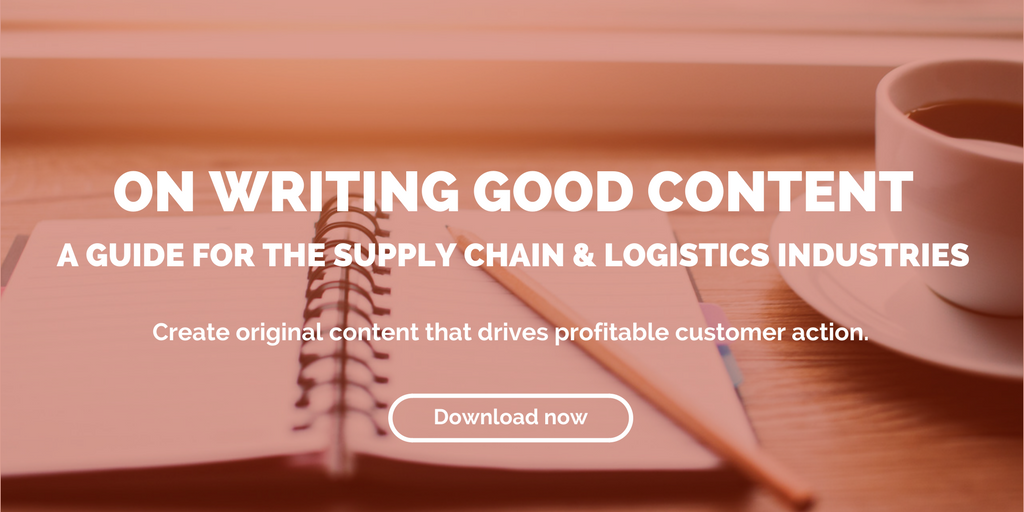
by Jennifer Hart Yim | Oct 12, 2017 | Blog, Data/Analytics, Logistics, Strategy, Supply Chain
Shippers should be tracking these last-mile metrics to drive down the high cost of last-mile logistics.
This post comes to us from Adam Robinson of Cerasis, a top freight logistics company and truckload freight broker.
Using technology to improve last-mile metrics is essential to driving last-mile costs down, but how do shippers know if the technology is helping or hurting? The answer to this question lies in using last-mile metrics to track key performance indicators and target levels of service to ensure accountability, visibility and continued reduction of costs in last-mile delivery.
A recent survey of customer service experiences, reports DC Velocity, revealed many retailers feel current technologies do not address their customer service needs, and as few as 3 percent of retailers cite full support as part of their current systems. Unfortunately, history teaches shippers that reducing costs means cutting customer service, but integrating customer service data into delivery operations and transportation systems is key to increasing a brand’s value. In fact, 72 percent of survey respondents believe it is very important to improve access to data for in-transit shipments, which includes last-mile delivery. Essentially, shippers need to track these 11 metrics.
1. On-Time Deliveries Are King of Last-Mile Metrics
The number of on-time felt or late deliveries are more important than any other metric tracked in last-mile logistics. These metrics provide a quick yes or no analysis of the effectiveness of your last-mile logistics strategy.
2. Fuel Consumption Rates
Last-mile metrics involving fuel consumption rates can vary and depend on the preference of the company, but how fuel consumption rates are calculated can greatly influence whether a driver is saving or wasting fuel.
For example, overall fuel consumption costs may be lower, but interval-based fuel consumption rates could show consistent, stopping and starting patterns that do not coincide with existing routes and drive up fuel costs. As a result, fuel consumption rates should be calculated by averaging the total fuel costs per driver, all drivers, per delivery vehicle and per route.
3. Last-Mile Vehicle Capacity Used Versus Available
Last-mile logistics should also consider the capacity utilized against the available capacity in all last-mile delivery vans. This metric is calculated by dividing the available capacity by the total capacity. Excess available capacity rates allude to poor loading procedures or the need to consolidate routes. The same calculation is used to calculate capacity used, dividing the capacity used by total capacity.
4. Planned Versus Actual Mileage
Planned versus actual mileage last-mile metrics are calculated by dividing the actual mileage per vehicle, driver, or route by its own planned mileage. Higher actual mileage rates reveal problems with route planning or unforeseen detours to route schedules.
5. Driver Hours In-Motion and Stationary
In-motion and stationary driving hours are expenses in last-mile logistics, and, unless your company employs a fully autonomous and drone-assisted delivery network, stops are necessary. However, the amount of stops and hours of both in-motion and stationary position can help measure performance of drivers. Excess stationary hours or excess in-motion hours are calculated by dividing the total amount of time drivers spend on a route by the number of hours in motion and the number of hours stationary.
6. Cost Per Item, Per Mile, and Per Vehicle
Last-mile metrics should track the cost per item, per mile, and vehicle associated with a specific route and the company as a whole. As a result, shippers should average the total costs per item for a given route and for the company’s shipments over a set period. The same average process should apply to both mile and per vehicle metrics, too.
7. Number of Stops
Last-mile logistics and metrics should also track the number of stops per vehicle. This is important to monitoring fuel costs, but it can also allude to poor route optimization practices. In other words, vehicles with a high number of stops should be reevaluated for ways to improve route schedules.
8. Average Service Time
The average service time metric can be complicated because it involves different data to calculate, depending on the source of an order. Most commonly, it is calculated by dividing the total service time at the store by the total number of deliveries. In other words, what is the average amount of time spent per order between the store, the warehouse, and other pre-shipping processes?
9. Customer Complaints
The need to manage customer service and address customer complaints leads to another metric in last-mile logistics, reports Talking Points With Adrian Gonzalez. What is the total number of customer complaints, and how do they stack up against the total number of deliveries? This metric is calculated by dividing the total number of deliveries by the total number of complaints received.
10. Order Accuracy
Order accuracy is calculated by comparing the known inaccuracies of orders against all shipped orders. Since some consumers may never report inaccurate orders, it is difficult to track a specific order inaccuracy metric. Instead, shippers should track order accuracy rates by dividing the total number of shipped orders by the number of orders not subject to customer service disputes, calls or complaints.
11. Damage Claims
A final last-mile metric to track is also about problems with orders: damage claims. Shippers should track the number of incoming damage claims against the total number of shipments. This is calculated by dividing the number of damaged claims by the total number of shipments. The resulting value is the percentage of damage claims in decimal form.
Using Metrics, Shippers Can Improve Last-Mile Logistics
Metrics allow shippers to understand the ins and outs of last-mile logistics, and metrics provide a means of measuring the performance of last-mile logistics plans against actual processes and their associated costs. As a result, shippers can make changes to their operations to improve last-mile services through last-mile metrics, and knowing more about last-mile needs is key to providing more than just the standard last-mile delivery options.
Related posts:


by Fronetics | Sep 19, 2017 | Blog, Content Marketing, Marketing, Strategy
B2B software company Text Request took 4 steps to grow organic traffic, a key component of any content marketing strategy.
We content marketers are always keeping an eye on organic traffic. It’s an indicator of success (though by no means the only one). Basically it lets you know how many of your website’s visitors found you by using a search engine. If you’re consistently publishing quality content that has value to your prospective customers, you should see a steady rise in organic traffic to your website.
But many B2B companies struggle with generating organic traffic to their websites. In fact, 61% of companies list generating traffic as their biggest marketing challenge in the 2017 State of Inbound Report. Over half (55%) list growing traffic to their website as a top priority in the next 12 months.
So how did Text Request, a B2B texting software company, grow organic traffic by 120% in 5 months? Marketing Director Kenneth Burke outlines the four simple steps the team took to drive this growth.
4 steps to growing organic traffic
1. Start with simple changes.
Text Request started with very basic steps to begin driving more traffic to its website. These changes included technical updates to their website, increased site speed, and a new content strategy. The updates to their website made the site more appealing to viewers, and the increased site speed led to a lower bounce rate. Of course, a documented content strategy should be a priority for any company hoping to grow its digital footprint.
2. Create 10x content.
The term ‘10x content’ was coined by Moz founder Rand Fishkin. Essentially, you create content that is ten times better than that which appears in the top search results for that subject. Sounds overwhelming. But think about it in terms of three specific audiences:
- Me: If you wouldn’t consider the content you’re creating valuable, then it most likely won’t add value for others.
- Targets: In order to add value and answer questions and/or inform prospects on a topic, understand what your target audience is lacking and fill that need.
- Competitors: By creating content that is better than the competition, you validate yourself as an industry leader.
3. Revamp existing content.
Content published months or even years ago doesn’t have to fade out. Updating older content gives these posts a renewed value. This is an important part of our content strategy here at Fronetics.
As part of his mission to increase organic traffic, Burke dug through older content to find posts he could revamp, updating as many as 60 posts in 5 months. That may seem like a lot. But, oftentimes, updating older content is easier than starting from scratch — especially if the topics are still relevant and just need updated statistics and research. By revising outdated material, Burke is “confident that they made a huge impact on our organic search traffic.”
4. Strive for backlinks.
Backlinks are incoming links to pages on your website from other websites. If the websites linking to your content are of high quality, search engines will start to consider your website more valuable — otherwise, why would these quality sites link to you? Thus, backlinks are an important component of a search engine optimization strategy.
Understanding their importance in driving organic traffic, Burke worked to improve the amount of backlinks to Text Request’s website. “From December to May, we grew our total number of backlinks by about 60%, which, in addition to driving referral traffic, boosted our standing with search engines.”
Most of the backlinks came from three specific places: HARO, guest posts, and earned links. Most important to earning backlinks was the research Text Request published in its content, which other companies found valuable — valuable enough to cite and link to in their content. These links were validation that the 10x content strategy was paying off for Text Request.
Results
With these four simple steps, Text Request saw a 120% growth in organic traffic to its website. The company more than doubled traffic in five months. More traffic = increased brand awareness = more prospective customers and leads = more sales.
While Burke was able to get pretty dramatic results very quickly, it’s important to note that improvements to your website’s search engine optimization do, most often, take some time to unfold. But, over time, results of your work will continue to amplify
Related posts:

by Fronetics | Mar 29, 2017 | Blog, Content Marketing, Marketing, Social Media, Strategy
Follow these four steps during the trade show to ensure you’re getting the most out of your lead generation efforts.
This is the second installment in our three-part series about generating leads around a trade show.
As you enter the convention center, you feel confident in your preparation for the trade show. You have been setting goals, researching your audience, advertising, and creating fresh content to distribute at the show.
But now you are focused on how to stand out amongst the other attendees. How do you promote your brand while you are surrounded by your competitors?
It should go without saying, but having personable, knowledgeable staff that are excited about the show and eager to educate customers is the foundation for trade show success. If potential customers enter your booth, and they are not immediately greeted with a friendly smile and a helping hand, you are missing opportunities for leads.
Once you have established which staff best suits your trade show needs, you can focus on standing out on the floor. Here are four tips to ensure lead generation success while attending the trade show.
Engagement and lead generation at the trade show
1. First impressions last
According to the Harvard Study of Communications, 55% of first impressions are based on visual cues. The way you look, the way you dress, and the appearance of your booth are saying a lot about your brand and products before you even open your mouth.
The visual displays at your booth should sell your brand as much as your staff. Invest the time and money into shirts with your company logo for staff to wear. Have tablecloths that represent your company’s image. And develop presentation boards that highlight new products and services. First impressions are so important because they last. You want to make sure that every person that walks by your booth gets the right impression about your brand.
2. Extend your reach with a giveaway
Cost-effective promotional items not only provide brand exposure, but also can attract quality leads to your booth. Get creative with your giveaways and use them as an opportunity to spread your logo throughout the trade show.
Giveaway items should be unique and useful. For example, promotional products guru Cathy Houston suggests a money clip for your smart phone. “This slim silicone pocket attaches to the outside of any mobile device and is perfect for storing driver’s licenses, credit cards, hotel keycards, business cards, and cash. … It can be useful to attendees right away.” With people constantly checking their phones, this giveaway will be a visual reminder of your booth across the trade show floor.
3. Create an experience
It’s not enough to simply promote your products and services at a trade show. You need to get attendees involved by creating an interactive booth.
The more hands-on, the better. Live demonstrations of new products allow potential customers the opportunity to try out what you are selling. Creating games or contests also gets attendees involved by having them answer questions or engage with your staff. While interacting with attendees, make sure you are capturing their contact information and leading them to your landing page (that you created before attending the show).
4. Make your attendance known on social media
You already have used social media to let prospects know you are attending the trade show. So keep up the posting and tweeting while you are at the show.
Use time-sensitive giveaways to boost booth attendance and promote special sessions and upcoming presentations live from the trade show floor. Videos and pictures of your live demonstrations and contests are sure to create a buzz amongst attendees. Use these posts to continue to push your landing page and let potential customers know what you are up to throughout the trade show.
Creating a presence at a trade show gives you a powerful platform for meeting new customers, reconnecting with existing clientele, and building a more established brand. Exhibiting at a trade show gives you unparalleled access to important prospects, who are taking the time to learn about your products and services. These four tips can help you get the most engagement from your attendance, while collecting leads that will ultimately grow your business and sales.
Other posts in this series:

by Jennifer Hart Yim | Dec 6, 2016 | Big Data, Blog, Data/Analytics, Leadership, Logistics, Strategy, Supply Chain, Transportation & Trucking, Warehousing & Materials Handling
Supply chain leaders must be ready to implement big data in order to continuously improve.
This guest post comes to us from Adam Robinson, director of marketing for Cerasis, a top freight logistics company and truckload freight broker.
Supply chain leaders are enthralled with the idea of using big data, but they tend to fail to understand how to disseminate big data in their organization properly. True, they may know how to roll out big data in a single warehouse, or they may have heard their competitors used branded systems for implementing this new technology. However, the fundamental problem remains.
Supply chain leaders must be ready to implement big data and leverage it to improve their companies without any delay or inhibition. This may sound impossible and frightening, but they must only understand how big data always goes back to these two, simple principles of measurement: review and action.
Ask traditional questions, and let big data provide answers.
The most common complaint of newer companies using big data analytics capabilities tends to revolve around traditional questions of business strategy. Consider the following elements explains John Richardson of Inbound Logistics, that impact business strategy.
- Increasing order efficiency.
- Demand forecasts.
- The quantity of each product.
- Inventory location and management.
- Raw material suppliers and logistics.
- Transportation modes used in procurement and shipping.
- Distribution of goods prior to purchase.
- Demand fluctuations.
Each of these elements more traditionally handles by outsourcing analysis of processes to supply chain consultant. This is actually where the concept of third-party logistics providers involved. However, rapid growth and diversification of products are making shippers, manufacturers, and suppliers rethink their business strategy. In other words, consumers can get practically anything they want at a moment’s notice, and more consumers are expressing a willingness to wait for a product a few days if free shipping is a possibility. So, this need to adapt operations reflects the common concerns of traditional customers and supply chain entities. However, there is a distinction.
Previously, these entities only needed to focus on their local demographic for ensuring continued stability. But the rise of the internet has given consumers and everyone else the ability to access any product from any seller and any place on the globe. This is a traditional business strategy, and it is essential that the modern supply chain is willing to use big data all operations to create a more positive result than consumers, stakeholders or government organization ever needed before.
Performance measurement and management.
As explained in a previous blog post, continuous improvement in an organization can be achieved through the use of performance measurement tools via big data. Mostly, this reflects the skills and actual working capacity of employees. Since employees represent one of the largest expenses an organization may face.
Having the best staff members available can mean the difference between success or failure in a company. Furthermore, big data can help employees understand what they do and do not need to do in order to improve their performance scores. This will also help to prevent oversight from managers and keep all employees on track to complete their responsibilities as assigned.
Performance measurement does not have to be limited to the performance of employees either. It can be expanded to identify poorly performing machines, or it can be used to isolate inefficiencies in collaboration with suppliers or vendors. Ultimately, performance measurement is a metaphor for tracking any metric in the course of the supply chain, but it’s key to being effective is found in transferring the insights gleaned from big data into actionable results.
For example the operational efficiency of a given loading is directly related to how quickly pickers are able to fulfill orders and move them onto the dock. Obviously trucks can only be loaded so fast; what is the number of pickers appropriate for the current workload, or which route through the factory is adding an extra 20 minutes to each worker’s duties?
These questions illustrate that the most insignificant details can be driving forces of inefficiency in the supply chain. But they represent opportunities for continuous improvement. Changes in the design or layout of the warehouse or alterations to the truck schedule may require changing the duties of a certain worker at a moment’s notice. Essentially, the worker must be able to access continuous data measurements on all factors affecting his or her responsibilities.
Supply chain leaders need to focus on continuous improvement.
Continuous improvement is a complex notion. It is based on hundreds, if not hundreds of thousands, of individual metrics from various collection points and analyzed in real time. All of this reflects a very large volume of data. It can be digested and broken down into usable bits, much like the biological processes of the stomach making it essential to surviving the coming season.
This comparison is much more than a metaphor; it is the real issue being faced by supply chain entities and their leaders. Supply chain leaders must use big data to gather insight and create quantifiable measures of performance and functionality across their enterprises on a recurring, frequent and immediate basis.
Related posts:

by Fronetics | May 31, 2016 | Blog, Content Marketing, Marketing

Overcome writer’s block with these ideas for blog posts.
It’s time to write that new blog post, and your computer screen is a vast, white page of emptiness. Maybe it feels as if you have covered all of obvious topics of interest and you have nothing left to write about. You need direction. You need motivation (or coffee). You need fresh ideas, a new angle or approach, or a modern-day muse!
You are not alone. Topic development is a skill, and some days it is a challenge — especially because you want your content to be unlike any other post out there. And there is a lot of content to compete with: Reportedly, 88% of B2B marketers use content marketing as part of their programs.
So, your post needs to stand out above the crowd, engage readers quickly, and offer them something valuable (e.g., information or entertainment) to keep them coming back to you for more. With that in mind, here are 10 prompts to get you going on your next blog post.
10 writing prompts for blog posts
1) Identify customer pain points.
Think about your target audience. Who is that potential customer? What are some of their everyday pains or challenges? Provide them with insight or information, offer advice, or provide solutions for overcoming those problems.
2) Use your industry experience.
Create a comprehensive list of industry-related statistics or facts. Then, focus on one that you can speak to. Such posts position you as a thought leader on industry challenges and trends. They also are great for getting inbound links (meaning other sites will link to your post, which improves your SEO).
3) Capitalize on popular trends.
What is hot in your business right now? What is important and trending in your potential customer’s corner of the world? Speak to others in your company for their ideas. Is this trend going to last? If it is on its way out, what is your prediction about what the next big trend may be?
4) Provide information.
Write a how-to guide. Help your readers make a decision or accomplish a task. Show your knowledge about the subject to establish yourself as a trusted source of information.
5) Offer a different opinion or new perspective.
Read other blogs in your industry for fresh ideas. This is simply a leaping-off point — plan to cover the topics in a different way.
6) Join in on top-level industry conversations.
Follow industry leaders on Twitter and LinkedIn. Join social media groups related to your business, and read what others in your specific industry are sharing. What are they posting about today? How can you expand on it or argue a different opinion or solution?
7) Localize a new story.
Read trade publications, magazines, and even the news for ideas. How can a hot topic relate to your business or customers? Look for hidden connections. In the newspaper business they call it “localizing” a story — essentially taking a story that, on the surface, is not related and finding a way to discuss it in terms of localized relevance.
8) Share your “musts.”
Write a top 10 list of industry must-knows, or perhaps must-dos, or even must-reads. Be a key source for even more information and knowledge.
9) Introduce your latest release.
Write about your latest project, product, or service and how it will solve specific challenges or address certain needs.
10) Answer customer questions.
Read and digest all of your readers’ responses, posts, or questions. Sometimes the customer generates great blog ideas through a conversation or a question. Write your post as a generalized response to others who may have the same concern, idea, or question.
Content marketing helps connect potential customers to your company by offering information they can use. But creating consistent, relevant content can be time-consuming and costly. If you frequently find yourself staring at a blank screen, consider outsourcing this important task to professionals. Many companies find it provides the optimum results, saving time and resources.
Related posts:









